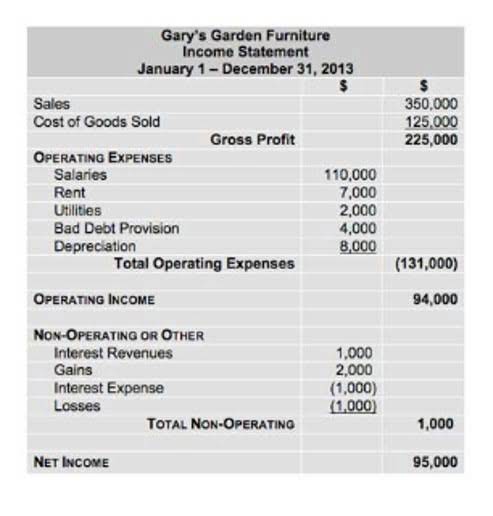
The main difference is that FIFO uses older inventory, while LIFO uses newer inventory, affecting profit margins. FIFO and LIFO affect not only inventory valuation but also your profit margins in your financials. Simply, choosing between FIFO or LIFO affects a company’s taxes, income, and financial health significantly. When it comes to inventory management processes, catalog management software is essential. For a look at top options for catalog management, see this list of catalog management software. Below, we’ll break down the formulas for FIFO and LIFO, along with how to calculate the value of the remaining inventory under each method.

How to calculate COGS using FIFO?
This method is also known as the weighted average and is calculated over a specific time period. Simple to use, whether a business or purchasing or producing goods, the end net income is a balance payroll between FIFO and LIFO. This article breaks down what the FIFO method is, how to calculate FIFO for your store and the key differences from LIFO. Plus, how your business can benefit from applying this inventory accounting method and how Easyship can help you simplify shipping today. The moving average costing method continually updates the average cost of inventory after each purchase.
Real-World Examples of FIFO and LIFO

If you’re ready to try out a dedicated inventory system, Zoho Inventory is free to start. Under the moving average method, COGS and ending inventory value are calculated using the average inventory value per unit, taking all unit amounts and their prices into account. FIFO, on the other hand, is the most common inventory valuation method in most countries, accepted by International Financial Reporting Standards Foundation (IRFS) regulations. If suppliers or manufacturers suddenly raise the price of raw materials or goods, a business may find significant discrepancies between their recorded vs. actual costs and profits. A higher inventory valuation can improve a brand’s balance sheets and minimize its inventory write-offs, so using FIFO can really benefit a business financially. Susan started out the accounting period with 80 boxes of vegan pumpkin dog treats, which she had acquired for $3 each.
- In short, you use the first three units to calculate cost of goods sold expense.
- Learn to accurately calculate FIFO Cost of Goods Sold with a clear, step-by-step guide, including adjustments for returns and final recording.
- But when using the first in, first out method, Bertie’s ending inventory value is higher than her Cost of Goods Sold from the trade show.
- Since the economy has some level of inflation in most years, prices increase from one year to the next.
- A few weeks later, they buy a second batch of 100 mugs, this time for $8 apiece.
Financial Flexibility for Businesses with Volatile Costs
LIFO is more commonly used by companies dealing with nonperishable goods to reduce tax burdens during inflation. It’s the opposite of FIFO, where the newest inventory is sold first instead of the oldest. Without a clear system in place, even the best valuation method fails to deliver efficiency where it matters most—on the plant floor. However, FIFO is still more common in retail due to its fifo equation better inventory flow tracking. However, because LIFO is not permitted under IFRS, it is primarily used by U.S.-based companies following GAAP accounting standards. Financial institutions and stakeholders often prefer higher profit margins when evaluating a company’s financial health.
The $1.25 loaves would be allocated to ending inventory on the balance sheet. For many companies, inventory represents a large, if not the largest, portion of their assets. Inventory can be valued using a few different accounting methods, including first In, first https://www.bookstime.com/ out (FIFO) and last in, first out (LIFO). Inventory accounting methods are used to track the movement of inventory and record appropriate and relevant costs.

One is the standard way in which purchases during the period are adjusted for movements in inventory. The second way could be to adjust purchases and sales of inventory in the inventory ledger itself. The problem with this method is the need to measure value of sales every time a sale takes place (e.g. using FIFO, LIFO or AVCO methods). If accounting for sales and purchase is kept separate from accounting for inventory, the measurement of inventory need only be calculated once at the period end.
FIFO valuation ensures that inventory accounting reflects the actual consumption of materials in the manufacturing process. It aids in determining the cost of goods produced and sold, making the periodic inventory system management more straightforward. Since LIFO uses the most recently acquired inventory to value COGS, the leftover inventory might be extremely old or obsolete. As a result, LIFO doesn’t provide an accurate or up-to-date value of inventory because the valuation is much lower than inventory items at today’s prices. Also, LIFO is not realistic for many companies because they would not leave their older inventory sitting idle in stock while using the most recently acquired inventory.
- While LIFO produces a lower tax liability, the FIFO method tends to report a higher net income, which can make the company more attractive to shareholders.
- For example, in an inflationary environment, current-cost revenue dollars will be matched against older and lower-cost inventory items, which yields the highest possible gross margin.
- Industries with highly volatile inventory costs or where the latest inventory costs are crucial for pricing strategies may find FIFO less useful.
- Tractian’s CMMS eliminates the guesswork by providing real-time visibility into stock levels, part usage, and reorder points.
- FIFO is a straightforward valuation method that’s easy for businesses and investors to understand.
- The example given below explains the use of FIFO method in a perpetual inventory system.
FIFO Method’s Effect on Financial Reports
- The first in, first out (FIFO) method assumes that the first unit making its way into inventory–the oldest inventory–is sold first.
- Financial institutions and stakeholders often prefer higher profit margins when evaluating a company’s financial health.
- Suppose the number of units from the most recent purchase been lower, say 20 units.
- Ending Inventory is the value of goods or products that remain unsold, or we can say that remains at the end of the reporting period (Accounting period or financial period).
- It’s the opposite of FIFO, where the newest inventory is sold first instead of the oldest.
- This results in lower taxable income, reducing the amount a company owes in taxes.
Ending Inventory is valued on the Balance Sheet using the earlier costs, and in an inflationary environment, LIFO ending Inventory is less than the current cost. Thus in an Inflationary environment, i.e., when prices are rising, they will be lower. If your inventory costs are increasing over time, using the FIFO method and assuming you’re selling the oldest inventory first will mean counting the cheapest inventory first. You will also have a higher ending inventory value on your balance sheet, increasing your assets. This can benefit early businesses looking to get loans and funding from investors. Though both methods are legal in the US, it’s recommended you consult with a CPA, though most businesses choose FIFO for inventory valuation and accounting purposes.